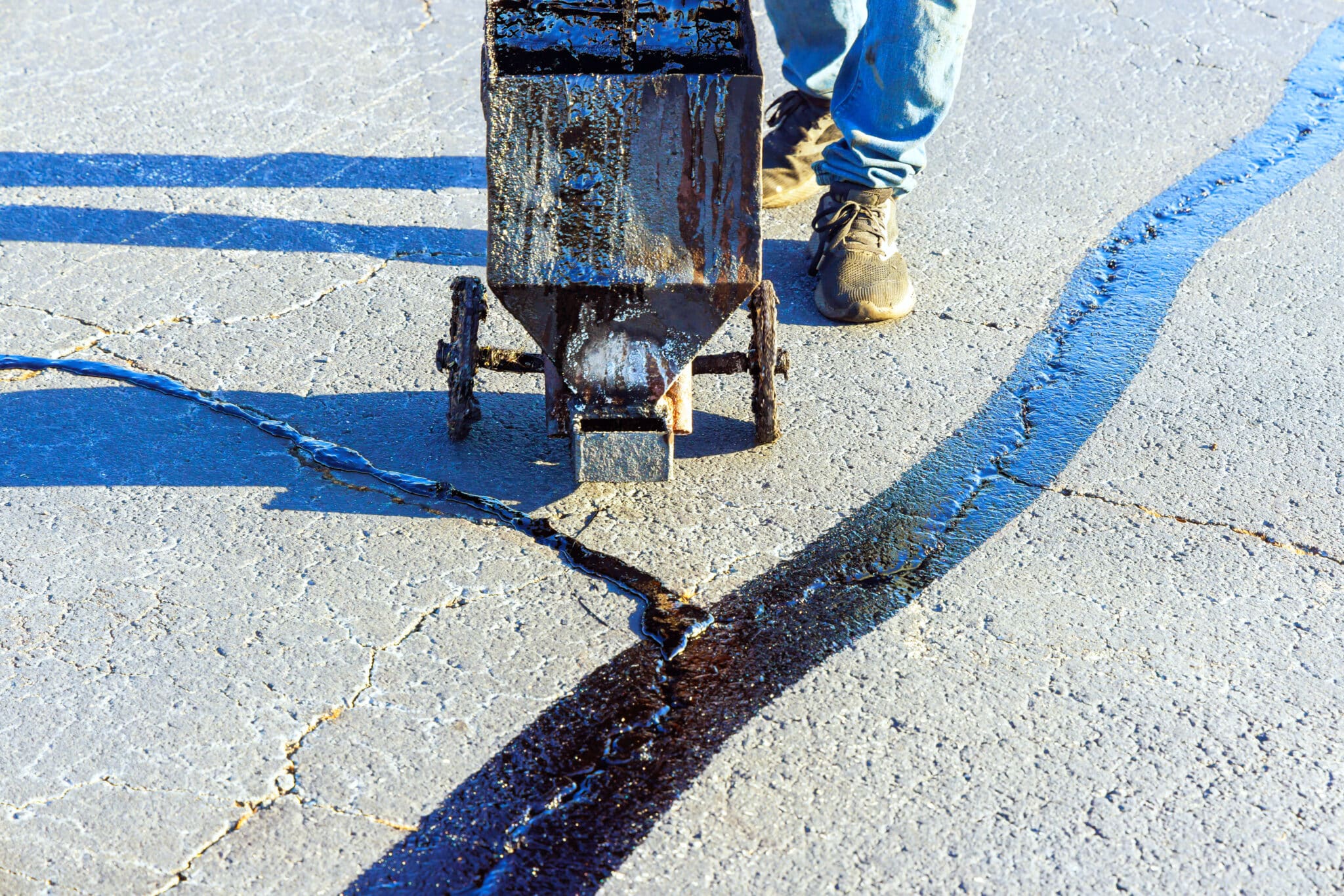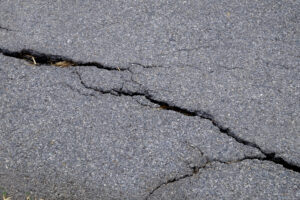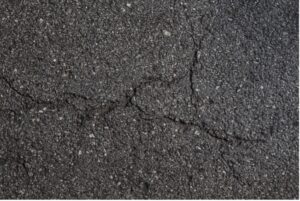Have you ever noticed straight lines running along your driveway or parking lot, almost like the asphalt decided to map out its own road system? Those are known as longitudinal cracks, and they can be a sign that your pavement might be in trouble. As a property owner, it’s important to understand what these cracks mean for the health of your asphalt and, by extension, your wallet. Whether you’re looking after a small driveway or a large parking area, recognizing and addressing these cracks early on can save you from headaches down the line. In this guide, we’ll go into the what, why, and how of longitudinal cracking, offering insights and solutions to keep your pavement looking pristine.
Definition and Characteristics of Longitudinal Cracking
Longitudinal cracking is a type of asphalt distress in which long, parallel cracks appear on the pavement’s surface. These cracks usually run parallel to the centerline of the road or parking lot and are typically more than 1 foot in length. They can vary in width and depth, but they are generally narrow and deep compared to other types of cracks. These cracks can also occur in clusters, which can create a pattern resembling alligator cracking. However, unlike alligator cracking, longitudinal cracks do not have a random or interconnected pattern.
Causes of Longitudinal Cracking
So, what causes these cracks to form in the first place? Several factors can contribute to longitudinal cracking, including:
- Poor pavement design or construction: If the asphalt layers are not properly compacted or if there is inadequate support beneath the pavement, it can lead to stress and ultimately cause longitudinal cracking.
- Heavy traffic loads: As vehicles travel over the pavement, they apply pressure and weight on the surface. Over time, this can cause the asphalt to stretch and crack.
- Aging of pavement: Asphalt is a petroleum-based material, so it is prone to deterioration over time due to exposure to elements like UV rays, water, and chemicals. As the pavement ages, it becomes more brittle and susceptible to cracking.
- Temperature changes: Extreme temperature fluctuations can cause the asphalt to expand and contract, which can lead to cracks. This is particularly common in areas with hot summers and cold winters.
- Moisture: Water can seep into the pavement layers, weakening its structural integrity and making it more prone to cracking. This is why proper drainage is essential for pavement maintenance.
- Lack of maintenance: If pavement cracks are not addressed and repaired promptly, they can worsen over time and eventually lead to longitudinal cracking. Preventative maintenance and routine inspections can help identify and fix cracks before they become a bigger issue.
Understanding these causes can help pave the way for effective prevention and maintenance strategies.
How Does Longitudinal Cracking Affect Asphalt?
Longitudinal cracking can have several negative impacts on asphalt pavement:
- Reduced structural integrity: Cracks weaken the overall structure of the pavement, making it more susceptible to further damage and deterioration. If left unaddressed, longitudinal cracking can lead to more extensive repairs to the base layers of the pavement.
- Water infiltration: As mentioned before, moisture can seep into the cracks and compromise the layers of asphalt below. This can lead to further cracking, potholes, and pavement deterioration. Water infiltration can also damage the subgrade, which is the layer of soil under the pavement.
- Safety hazards: Longitudinal cracks can create uneven surfaces that pose a safety hazard to pedestrians and vehicles. These cracks can also collect debris and water, making them slippery and increasing the risk of accidents.
- Costly repairs: As with any damage, addressing longitudinal cracking early on can save a significant amount of money in repairs and prevent the need for resurfacing. Neglecting cracks can result in extensive and costly repairs, causing a financial burden for property owners.
- Property Value: A well-maintained pavement can add value to a property, both aesthetically and financially. Longitudinal cracks can detract from the curb appeal of a property and lower its overall value.
Longitudinal cracking can also lead to unplanned road closures and parking lot closures, causing inconvenience and delays for drivers and businesses. If left untreated, it can also decrease the lifespan of an asphalt surface and require more frequent resurfacing or replacements.
Repairing Longitudinal Cracking
It is important to first identify the underlying cause to address longitudinal cracking. This can be determined through visual inspection and evaluation by a professional asphalt repair company. Once the cause has been identified, repairs can be made to prevent further damage and extend the life of the pavement.
Some common methods for repairing longitudinal cracks include crack sealing, sealcoating, and resurfacing. Crack sealing involves filling the crack with a hot pour asphalt or rubberized asphalt sealant to prevent water from penetrating and further damaging the pavement layers.
When caught in a timely manner, crack sealing is the best solution for longitudinal cracks. But, when left open, moisture will enter the crack and the sub-base will eventually fail. This can cause alligator cracking and require more costly repairs that involve removing and replacing or resurfacing asphalt.
Sealcoating, also known as pavement sealing, is a protective coating applied over the surface of the pavement that helps to prevent water and other harmful substances from seeping into the cracks.
In cases where the longitudinal cracking is more severe, resurfacing may be necessary. This involves removing the top layer of the pavement and replacing it with a new layer, providing a smooth and durable surface. Resurfacing also helps to address other issues, such as potholes and rutting, improving the overall condition of the pavement.
If the sub-base or underlying layers of the pavement are found to be damaged, more extensive repairs may be required. This can include excavating and rebuilding the affected areas, which can be a time-consuming and costly process. Therefore, it is important to regularly monitor and maintain pavement to prevent these types of issues from occurring.
A professional asphalt repair company can assess the condition of your pavement and recommend the best course of action to address any longitudinal cracking or other damage. This can save property owners time and money in the long run and keep their pavement looking at its best for years to come.
Prevention Tips for Property Owners
As a property owner, there are steps you can take to prevent longitudinal cracking from occurring on your asphalt pavement. Proper maintenance and proactive measures can greatly extend the lifespan of your pavement and minimize the need for repairs.
- Regularly inspect your pavement for cracks, potholes, and other damage.
- Clean and sweep your pavement regularly to remove debris that can contribute to damage.
- Promptly address any cracks or damage found to prevent them from worsening.
- Ensure proper drainage to prevent water from pooling on the pavement surface.
- Avoid heavy traffic and excessive weight on the pavement, especially during periods of extreme temperature fluctuations.
- Seal the cracks every 1-2 years.
- Sealcoat your pavement every 2 to 3 years to protect it from UV rays and water damage.
By following these prevention tips and partnering with a professional asphalt repair company, property owners can avoid costly repairs and ensure their pavement remains in good condition.
Get a Longitudinal Crack Repair Pricing Quote Today
Understanding longitudinal cracking is one of many steps in ensuring the longevity and safety of your pavement. As we’ve explored, these cracks are not just a minor inconvenience but a clear signal from your asphalt that it needs attention. By staying vigilant, conducting regular inspections, and addressing issues promptly, you can prevent small problems from becoming major expenses. If you need help with your longitudinal crack repair, contact Superior Asphalt today. We offer comprehensive asphalt repair services to keep your pavement in top shape, and our team of professionals is ready to provide you with a detailed pricing quote.




